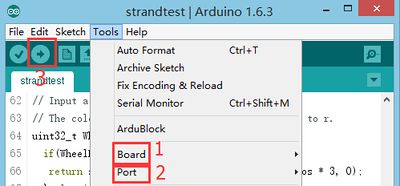Difference between revisions of "Time-lapse Photography"
From Microduino Wiki
| Line 144: | Line 144: | ||
==Video== | ==Video== | ||
| − | + | ||
|} | |} | ||
Revision as of 08:13, 8 July 2016
| Language: | English • 中文 |
|---|
ContentsObjectiveHere we use the Microduino-IR Emitter to send infrared signal in the delayed time so as to control a SONY camera for picture taking and achieve time-lapse photography. Experiment One: System sends signal in the delayed timeEquipment
Preparation
Debugging
#include <IRremote.h>
#define PHOTO 0xB4B8F
IRsend irsend;
void setup() {
Serial.begin(115200);
pinMode(6, OUTPUT);
}
void loop() {
for (int i = 0; i < 3; i++)
{
irsend.sendSony(PHOTO, 20); // Sony code
delay(12);
}
delay(5000);
}
Program Debugging
Experiment Two: Key Control Picture-takingEquipment
File:IR Crash.jpg 600px Hardware Buildup
Software Debugging
#include <IRremote.h>
#define PHOTO 0xB4B8F
IRsend irsend;
#define pushButton 8
int buttonState, num;
void setup() {
Serial.begin(115200);
pinMode(6, OUTPUT);
pinMode(pushButton, INPUT);
}
void loop() {
buttonState = digitalRead(pushButton);
if (num != buttonState)
{
num = buttonState;
if (num == 0)
{
take();
Serial.println("take");
}
}
}
void take()
{
for (int i = 0; i < 3; i++)
{
irsend.sendSony(PHOTO, 20); // Sony code
delay(12);
}
}
You can target the IR Emitter to the camera's infrared receiver, then set the camera to remote control mode, press the key and button and the camera takes picture once. Program Description
buttonState = digitalRead(pushButton);
if (num != buttonState)
{
num = buttonState;
if (num == 0)
{
take();
Serial.println("take");
}
}
Video |
